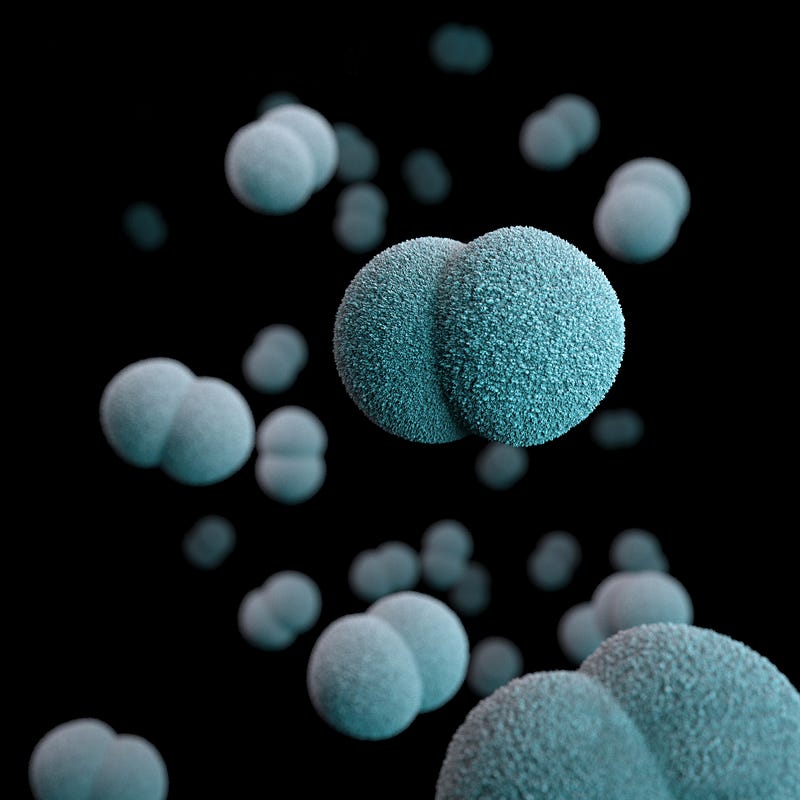# Exploring the Longevity of Bacteria: A Million-Year Mystery
Written on
Chapter 1: The Resilience of Bacteria
Recent research has unveiled astonishing findings regarding ancient microorganisms. Scientists extracted a deposit from the ocean, dated to be a million years old, and upon testing, found that the bacteria within were revived. These microorganisms resumed their normal activities, including feeding, metabolizing, and reproducing.
Similar to the Turritopsis jellyfish and Hydra, which are often labeled as immortal, some sponges are believed to live for over ten thousand years. In contrast, humans have not surpassed a lifespan of 122 years. This raises the question: what dictates the lifespan of living organisms?
Currently, there is no scientific formula that can precisely determine the lifespan of a species. The methods used today rely heavily on observational data. Research indicates that genetic factors may account for only 25% of human longevity, with lifestyle, environment, and epigenetics playing a more significant role. However, the story is different for bacteria.
Bacteria possess remarkable structural features that enable them to endure for extended periods. These adaptations allow them to thrive in even the most extreme environments.
Bacterial Survival Strategies
In harsh conditions where resources are limited, bacteria can enter a state akin to hibernation. They significantly reduce their metabolic activities, which has been notably observed in antibiotic-resistant strains. Most antibiotics target the growth capabilities of bacteria, but by entering this dormant phase, they can evade the effects of these drugs.
The Protective Mechanism of Spores
Certain types of bacteria, specifically gram-positive ones, can encase themselves within spores. These spores are designed to protect vital components like DNA, proteins, and a small amount of moisture from environmental stresses. Endospores can withstand extreme heat, humidity, and other harsh conditions, ensuring the survival of the bacterial DNA. When conditions improve, these spores can germinate into active bacteria.

Adaptations to Extreme Environments
Some bacteria possess an additional lipid layer in their membranes, which provides insulation against freezing temperatures. These adaptations are particularly evident in psychrophiles, bacteria that thrive in cold environments.
Moreover, bacteria exhibit remarkable genetic flexibility. They can undergo mutations to adapt to various conditions, which enables them to develop new cellular functions while discarding less useful ones. For instance, at high temperatures, they produce heat-resistant proteins. Barophiles, organisms living in deep-sea environments, generate triethylamine to stabilize their cellular structures.
In the absence of oxygen, some bacteria can switch to anaerobic metabolism, deriving energy from unconventional sources during periods of starvation. Additionally, they communicate with one another through a process known as quorum sensing, allowing them to coordinate their survival strategies effectively.
The first video explores the intriguing question: Could These 830 Million Year Old Microbes Found In Salt Really Be Alive? This fascinating inquiry delves into the survival mechanisms of ancient microbes and their potential to endure through time.
The Ageless Nature of Bacteria
Bacteria have unique reproductive methods. They divide their cells to create offspring, and during this process, the parent cell rejuvenates itself, effectively remaining perpetually youthful.
While bacteria can experience accidental death through lysis, internal damage leading to necrosis, or programmed cell death (PCD), they do not age in the traditional sense. Thus, a million years is merely a brief moment in the lifespan of these resilient microorganisms.
The second video titled The Microbial Basis of Life highlights the essential role of microorganisms in sustaining life on Earth, shedding light on their incredible survival abilities.
Chapter 2: Conclusion
In conclusion, bacteria's extraordinary longevity and adaptability illustrate the complexities of life and survival. Their ability to withstand extreme conditions and evade aging challenges our understanding of longevity and the essence of life itself.